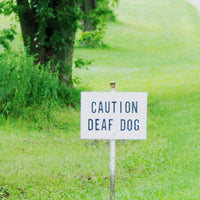Subtotal
CAD $0.00
or
We wanted to focus the spotlight on service dogs, as well as to offer a better understanding of the law and how we as a community can protect the rights of these dogs and their handlers.
Service dogs not only provide companionship to those who have disabilities, they also give them a better quality of life, allowing more independence and control over their own lives. These highly-trained dogs start their training in puppy hood. They then work tirelessly everyday to make sure that their person is safe, taken care of, and is provided with immediate attention in emergency situations.
Service dogs and their handlers are protected under the ADA (Americans with Disabilities Act) This mandates how service dogs and their handlers must be treated and clarifies their rights . The ADA defines a service dog as dogs that are individually trained to do work or perform tasks for people living with disabilities
. The ADA states that service dogs are not pets and must undergo rigorous training and evaluations before becoming a certified service dog.
Under the ADA, service dogs cannot be denied entrance to businesses – including food establishments – where regular family dogs would not be allowed. Even though they are allowed in those places, service dogs must still follow some guidelines such as being leashed or harnessed (unless that interferes with the dog’s job) – in that instance the dog must still be under their handler's control, be house broken and not aggressive towards people or other dogs.
The ADA also states that a person with disabilities cannot be asked questions specifically about their disability. However the staff of the business are allowed to ask two specific questions. These are:
Service dogs are usually identified by a vest or other indication that signifies this, but the ADA does not make this a requirement. Therefore, it is merely a choice of the handler. Some don’t want their disability broadcasted to the world, and the ADA protects that privacy and basic human rights. Any establishment that demands service dogs wear a vest to indicate that it is, in fact, a service dog is in direct violation of the law.
Because it is not a requirement for service dogs to wear identification, it makes it easy for selfish people to try and pass off their family dog as a service animal to get them into places they normally wouldn't be allowed. This is a huge disservice to the disabled community, not to mention, it is unethical and will earn you some really bad Karma! The people who do this take away from the importance of the role service dogs play in our community. It causes distrust between businesses and people, and minimizes the opportunities for those who actually need this service. It is also important to note that there is no such thing as registration for a service or emotional support dog . This is a common scam.
Service dogs accompany many types of people with different disabilities, and their roles are just as important – and diverse – no matter what disability their handler has. It is also important to remember that these dogs are working – you do not want to approach or disturb these animals. You should never pet or try to play with a service dog as this can be detrimental to the person with the disability because some of these dogs act as their eyes and ears. It is imperative that you are respectful to both the dog and their handler, and if you have children with you, that they are also educated about service dogs and the important role these dogs play in the handler’s life.
The disabilities that service dogs assist with are as follows:
As you can see, there is a wide variety of ways dogs can assist people with disabilities, while also providing comfort, happiness and a better quality of life for each individual. Dogs truly are amazing creatures, and there are lots of them out there that provide services beyond this. It is no wonder that dogs are truly man’s best friend!

